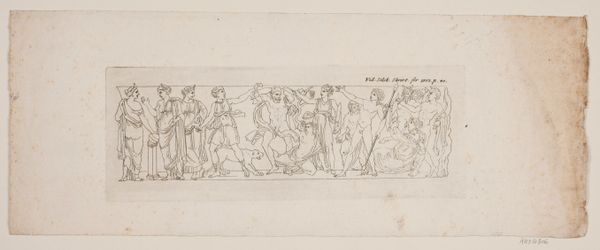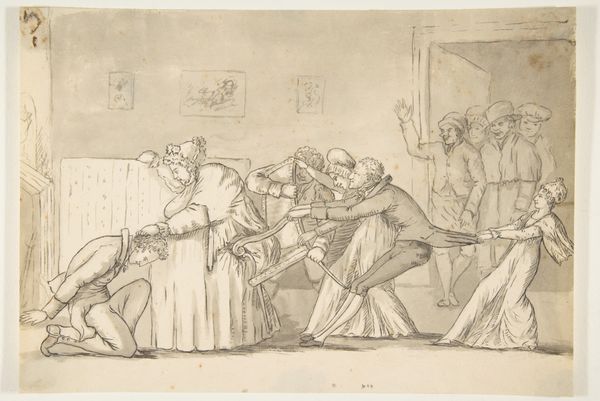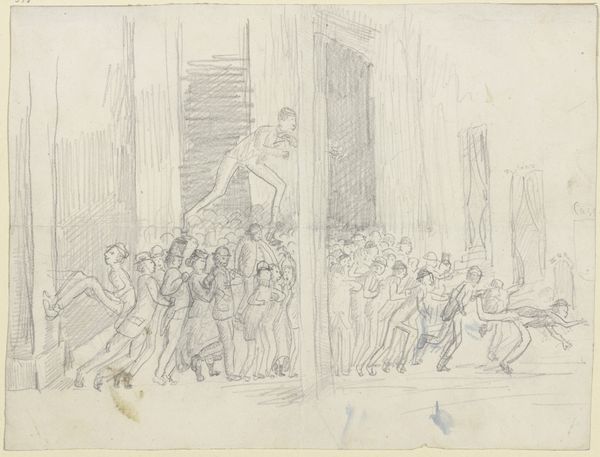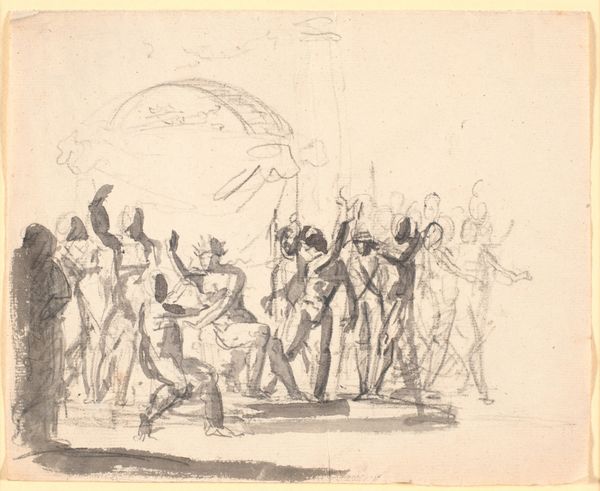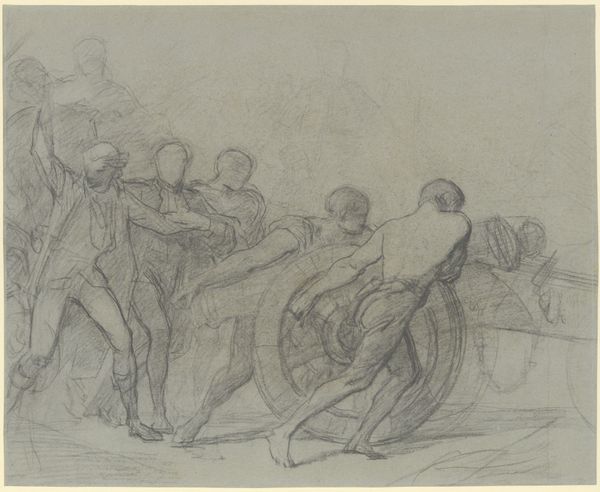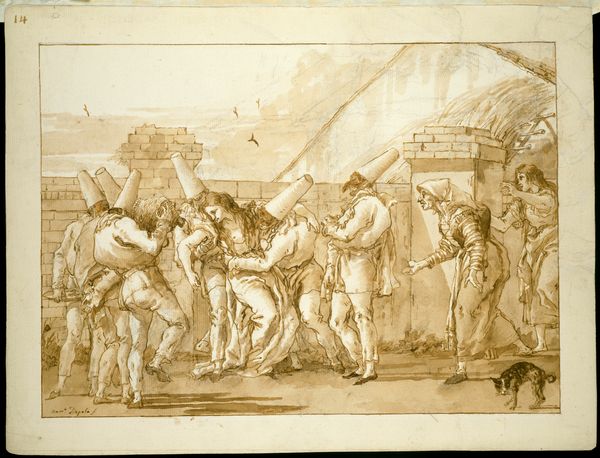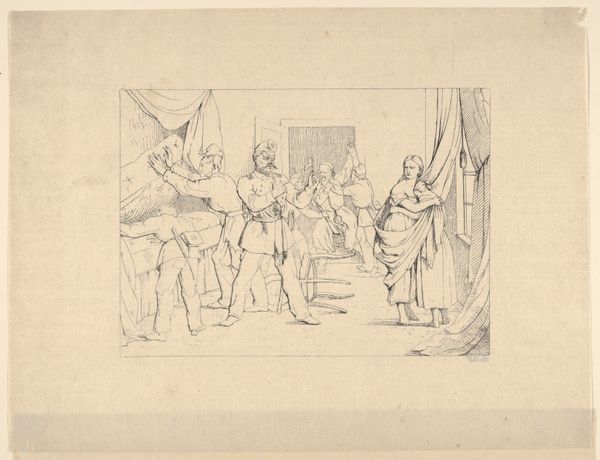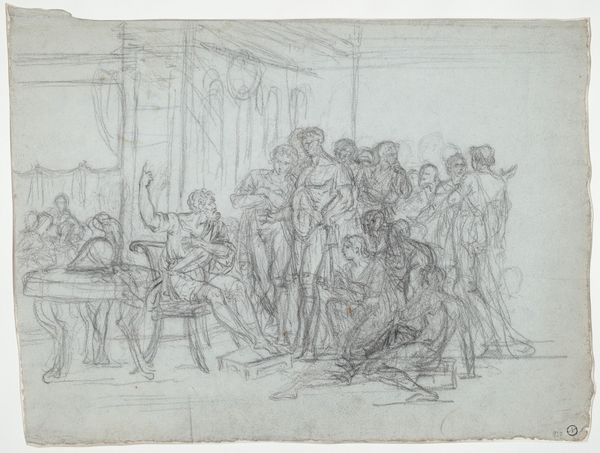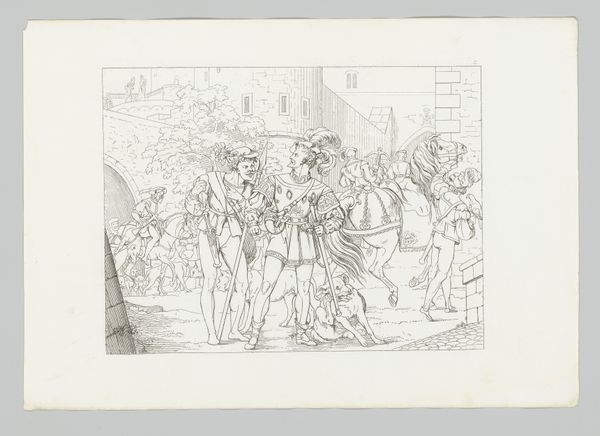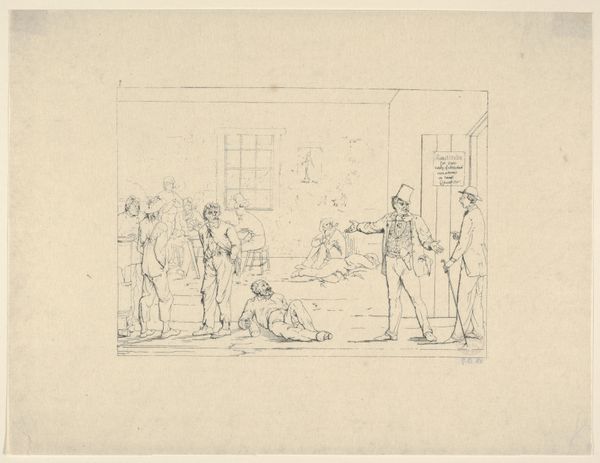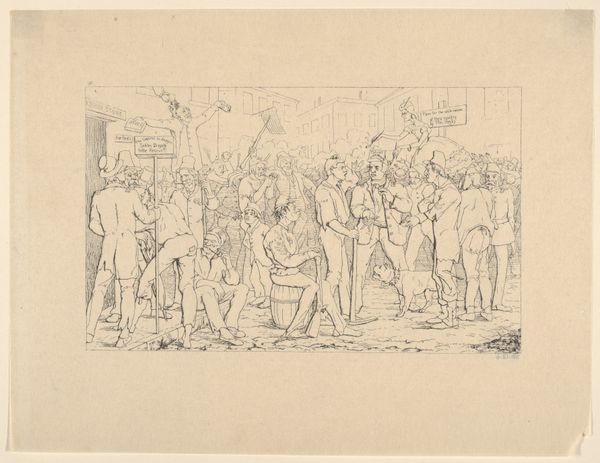
Composition Study for "Castor and Pollux Freeing Helen" 1817
0:00
0:00
drawing, pencil
#
drawing
#
narrative-art
#
classical-realism
#
figuration
#
female-nude
#
romanticism
#
pencil
#
history-painting
#
academic-art
#
male-nude
Dimensions: sheet: 8 13/16 x 9 1/8 in. (22.4 x 23.2 cm)
Copyright: Public Domain
Editor: Here we have Joseph-Ferdinand Lancrenon’s "Composition Study for 'Castor and Pollux Freeing Helen,'" created in 1817. It's a pencil drawing that depicts a scene with many figures, seemingly pulled from classical antiquity. There’s a lot of drama packed into a small space! What strikes you most about this composition? Curator: The recurrence of classical themes in the Romantic era speaks volumes. Beyond the surface narrative, Lancrenon grapples with cultural memory. What symbols do you observe being re-contextualized? Editor: I notice the architecture, of course, like the pillars, but also the helmets worn by some of the figures seem deliberately archaic. The nudes are pretty classical too, and recall antiquity. What’s so significant about those visual callbacks? Curator: The choice of depicting Castor and Pollux isn't accidental. As mythological saviors, they represent an aspiration. Do you think Lancrenon believed that symbols of a distant, legendary past could address his era's concerns? What psychological function might this serve for viewers? Editor: So it's not just about recreating a scene, but also about connecting to an idea of heroism or perhaps a longing for a lost golden age. I suppose viewers could then project these virtues onto contemporary struggles. Curator: Precisely. Each element—the architecture, the figures' stances, the emotional tenor—works to weave together cultural threads spanning centuries. The Romantic fascination with classical symbols reveals a search for continuity, for universal truths applicable across time. How do you think future viewers might interpret our own symbolic language? Editor: That's fascinating. I never thought about it in terms of a dialogue across generations. Now I’m pondering our own era’s enduring symbols!
Comments
No comments
Be the first to comment and join the conversation on the ultimate creative platform.
